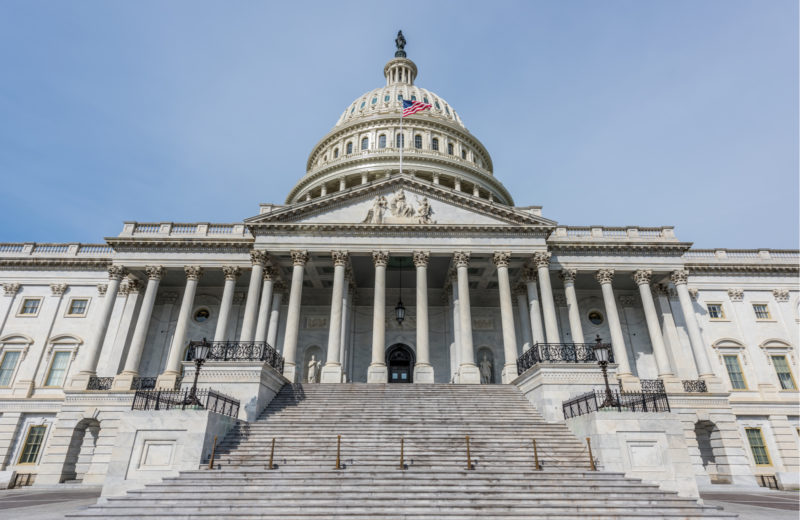State Capacity, Economic Growth, and Reverse Causality

A few days ago, Tyler Cowen sparked a debate on “state capacity” and classical liberalism. Simply put, Cowen contends that state capacity (broadly, the government’s ability to accomplish its intended policy goals) is not inimical to liberty and development. In essence, a strong state can protect property rights and provide important public goods, which may support and even extend markets, so long as it is appropriately constrained. Thus, a strong and capable state promotes liberty and economic growth simultaneously.
Many have jumped to criticize Cowen for his proposition that libertarians should embrace what he terms “state capacity libertarianism.” Without engaging on the issue of ideology, we believe that there is a crucial nuance missing from the discussion of state capacity. Cowen points out “rapid increases in state capacity can be very dangerous (earlier Japan, Germany), but high levels of state capacity are not inherently tyrannical.” Cowen also points that this capacity, when constrained, is beneficial to growth. Implicit in both statements is that the relationship goes from “increases in constrained state capacity” to “greater development.”
In a forthcoming article in the Journal of Economic Behaviour & Organization, this is exactly what we contest. If anything, the relationship runs backward – greater development invites greater state capacity.
Why question the relationship between state capacity and generalized prosperity? To start, the concept itself does not make sense as a social-scientific mechanism. It is difficult to see how state capacity, as used by Cowen and others, could be a causal explanation of growth. When we assess national well-being, whether in the form of high living standards or some other welfare metric, we must answer two questions: what incentives did agents on the ground have to promote those outcomes?
And from where did they get the information that enabled them to do so? These are inherently institutional questions, but those questions cannot be answered with recourse to mere institutional structure. State capacity may be a useful concept in economic history, but in terms of its explanatory capability, it is little more than institutional morphology.
Pointing out that governance institutions became centralized and hierarchical cannot explain why those governance institutions were used to “good” ends. To explain the role of states in e.g. fostering economic development, we need to invoke “something else” to explain why political elites in control of the state found it incentive- and information-compatible to promote the general welfare, rather than their own welfare narrowly. This “something else” has to be a deeper institutional property than state capacity.
But while it doesn’t make much sense to claim state capacity causes development, it makes much more sense to claim development causes state capacity. There are many poor countries whose governments have limited capacities and many rich countries with strong capacities. Countries in those categories easily come to mind. We can also come up with countries with strong capacities and low development, such as the USSR and Cuba. However, no one can come up with examples of rich countries with weak states. Why? There are many historical cases of weak states. They are often cited in the literature on the economics of anarchy and statelessness. They rarely persist for any extended length of time. They tend to meet their end either in conquest and subjugation or they build up strong states to resist conquest and subjugation.
The fact that we fail to see such examples of anarchy survive is highly informative of the direction of causality. A rich country with a weak state invites the predation from other countries. The inability to defend a certain stock of appropriable wealth is a lure for the rulers to subjugate the weak-state-capacity country. The weak state-capacity country has two choices. The first is to be conquered and absorbed by the strong-state-capacity country. The second is to invest in state capacity (i.e. a centralized-hierarchical fiscal bureaucracy that can harness resources for the purposes of producing national defense and/or others).
Either way, the “weak-state capacity” scenario has to end. It is an unstable equilibrium. It is unstable because growth generates an externality in the form of heightened attention from potential predators. In fact, as soon as there is a coherently organized state, it is hard to imagine how rich societies with more decentralized governance institutions could survive. As such, state capacity is not causing growth. It is a product of growth.
In terms of empirical research, this argument for reverse causality is rife with implications.
The first implication is that empirical studies of state capacity and its impact on growth suffer from selection bias. Only the societies that successfully built up state capacity end up in the sample of countries’ national economic performance. Those that failed simply disappeared or were absorbed. This means that to assess the effects of state capacity on growth, a better empirical approach would be to find a “low-state-capacity/high development” society that was absorbed into a “high-state-capacity” one and create a counterfactual. That counterfactual, which could be constructed with econometric methods like differences-in-differences or synthetic control, would tell us how much better or worse off that country would have been had it remained “low-state capacity”.
The second implication is more important. The whole state capacity literature starts from a clear, and undebatable, claim: that rulers build up state capacity because (and when) it is in their interest. Rulers have an “encompassing interest” in productivity. Thus, strong states promote economic growth by protecting property rights, resolving legal disputes, enforcing contracts, eliminating internal trade barriers, prosecuting crime, regulating weights and measures, and providing transportation infrastructure and public education.
However, if the capacity is built to plunder or resist plunder, then any positive outcome on growth is an accident and not the intent of rulers. Thus, we are still left with an important question unanswered: what institutions are amenable to human development? In this light, the state capacity literature only provides us with answers as to why certain states are better than others. It doesn’t do much to tell us what kind of governance is best.
We are not necessarily hostile to the views advanced by Tyler Cowen. In fact, we are quite amenable to them. We heartily endorse, for example, the call to focus not just on smaller government, but effective government. The problem is that, from a research perspective, there are important reasons to keep off the state capacity bandwagon, even if doing so would be ideologically congenial.












